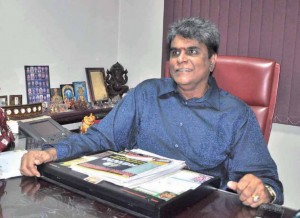 Dr. A. Sakthivel, Chairman, Apparel Export Promotion Council (AEPC), has announced that Tirupur is the first textiles cluster in India to arrive at the zero liquid discharge (ZLD) technology. He said: “We are proud to say that Tirupur is the first to arrive at zero liquid discharge (ZLD) in dyeing & processing technology.
Dr. A. Sakthivel, Chairman, Apparel Export Promotion Council (AEPC), has announced that Tirupur is the first textiles cluster in India to arrive at the zero liquid discharge (ZLD) technology. He said: “We are proud to say that Tirupur is the first to arrive at zero liquid discharge (ZLD) in dyeing & processing technology.
At present all dyeing & processing units are using 100% zero discharge technology. We created and generated more than 2000 MW in wind mill energy. That way also we are helping to achieve green field technology in the power sector.”
It is to be noted that with the High Court order, the dyeing & processing industry in Tirupur is facing a major problem, with many of the units having shut down.
On behalf of the Dyers Association of Tirupur, Dr. Sakthivel feels proud that all processing is carried out now with 100 per cent zero discharge technology. “We are sure that Tirupur will be back to normalcy and there will be steady progress in supplies both in domestic and international markets”.
He added: “Now both common effluent treatment plants (CETPs) and individual units are following this ZLD technology and are successfully meeting the requirements of the trade. More than 50% of total units are now running. Approximately 494 dyeing units and 162 bleaching units were there before closure under the Court Order. Out of 18, there are 16 CETPs now under operation.”
On the problem of water shortage, Dr. Sakthivel observed: “As far as water is concerned, we are not facing any problem since we are re-using water up to 90%. Moreover, due to this ZLD technology, some marginal percentage was being used after colour processing – in the form of salt water as concentrated salt solution – called BRINE Solution re-use. However, we are incurring more operational cost due to heavy load shedding and due to usage of diesel gensets”.
On the Tirupur business acumen, the AEPC Chairman said: “People here are very determined. They are very strong in continuing their established business. They will explore ways and means to live up to the expectations of their sourcing people, both domestic and international, even if they have to do business with minor losses, since this is a temporary phase. We have to continue with textile business. Tirupur traders are bent on achieving their goals in spite of all bottlenecks – like sudden increase in yarn prices, closure of dyeing & processing units and economic slowdown in our traditional markets of the US and Europe.”